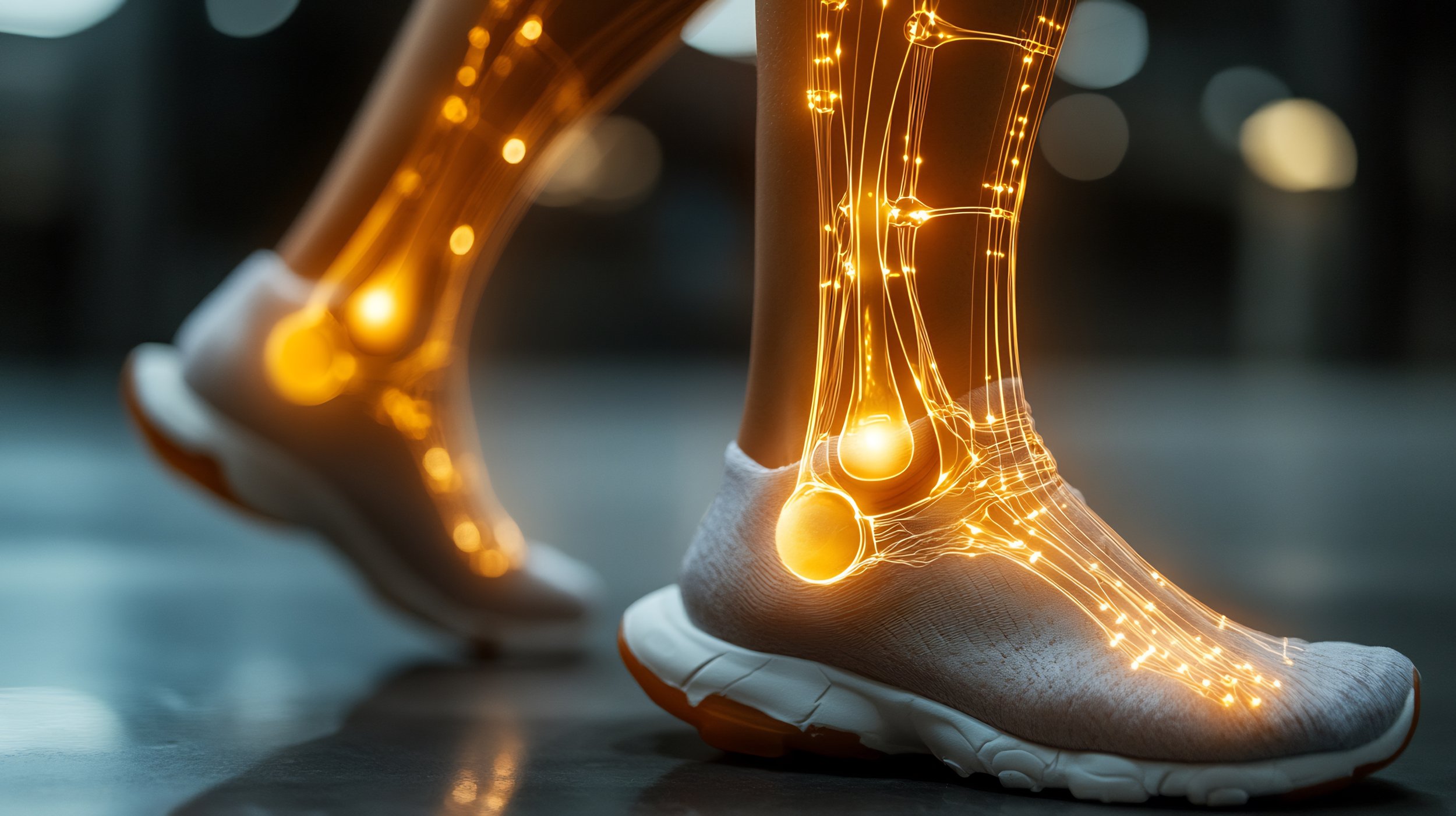
Neuropathic Pain
At Nexus Pain Management we are experts in diagnosing and treating all facets of pain from the top of your head to the tips of your toes. We offer treatment solutions for any cause of pain from mechanical issues (such as joint, tendon, ligament damage, hypermobility), neuropathic pains (pain resulting from nerve damage or over-activation), pre- and post-surgical pain, acute to chronic pains and anything in between.
Neuropathic pain, especially localised pains from nerve entrapment or chronic overstimulation is one of Dan’s primary passion areas. He is particularly adept at performing ultrasound-guided Dextrose hydrodissection, PRP and/or radiofrequency treatments to deal with these pains. Please see the relevant sections for more details on these procedures.
Understanding Neuropathic Pain
Neuropathic pain is a complex condition caused by damage or dysfunction in the nervous system, leading to chronic pain that can be difficult to manage. Neuropathic pain must be treated differently to standard pain treatments as the underlying cause is very different. Unlike typical pain caused by injury or inflammation, neuropathic pain results from nerve overactivity and miscommunication, sending excessive pain signals to the brain even when there is obvious direct cause. This type of pain can be debilitating, affecting daily activities, sleep, and overall quality of life.
Types of Neuropathic Pain
Localised Neuropathic Pain
Localised neuropathic pain occurs in a specific, well-defined area of the body. It is often caused by nerve injury, entrapment, post-surgical complications, or conditions such as postherpetic neuralgia (shingles-related pain). Patients may experience burning, tingling, or sharp shooting pain in the affected area. This can affect any nerve in the body. Sometimes chronic injury and pain can lead to a chronic over-activation of nerves in a region facilitating a neuropathic treatment modality to get effective relief. Common examples by body region include:
Upper limb:
Carpal tunnel syndrome (median nerve compression at the wrist),
cubital tunnel syndrome (ulnar nerve compression at the elbow)
Posterior interosseous nerve (PIN) entrapment (radial nerve compression at the forearm)
Neurogenic thoracic outlet syndrome (compression of nerves in the thoracic outlet region).
Lower limb:
Meralgia paraesthetica (compression of the lateral femoral cutaneous nerve),
Tarsal tunnel syndrome (posterior tibial nerve entrapment at the ankle)
Soleus sling syndrome (tibial nerve compression at the calf)
Baxter’s nerve entrapment (compression of the inferior calcaneal nerve in the foot sometimes mimicking plantar fasciitis).
Morton’s neuroma (irritation, swelling and pain of nerves around the ball of the foot)
Trunk and back:
Superior cluneal nerve entrapment (compression of nerves supplying the lower back and buttock region)
Paravertebral nerve irritation/entrapment
Effective management includes nerve blocks and hydrodissection, medications, radiofrequency treatment, topical treatments and advanced pain therapies.
Peripheral Neuropathy
Peripheral neuropathy refers to nerve damage affecting the peripheral nervous system, which includes nerves outside the brain and spinal cord. This condition commonly results from diabetes, infections, toxins (such as chemotherapy), or autoimmune diseases. Symptoms include numbness, tingling, burning pain, muscle weakness, and sensitivity to touch, often starting in the hands or feet and progressing over time in a “stocking and glove” distribution.
Peripheral neuropathy is quite a tricky pain to treat as its causes are diverse and commonly attributed to an “idiopathic” cause. Idiopathic means we don’t know why, it has just occurred without any known pathology.
Treatment focuses on addressing the underlying cause when possible, medications to manage pain, and therapies like physical rehabilitation or nerve stimulation. We are always looking into new, innovative ways to help Peripheral Neuropathy pains as we don’t have any profoundly helpful existing treatments. At Nexus Pain we are always exploring safe and potentially effective treatments for peripheral neuropathy with specific protocols for laser therapy, Neural prolotherapy and radiofrequency and neuromodulatory treatments.
Complex Regional Pain Syndrome (CRPS)
CRPS is a very severe and often disabling form of neuropathic pain that typically develops after an injury, surgery, or trauma. It encompasses severe neuropathic pain with comorbid involvement of the autonomic nervous system. This combination means it is characterised by continuous neuropathic pain with associated swelling, changes in skin colour and temperature, with extreme sensitivity and loss of function in the affected limb. The exact cause is not fully understood, but it involves abnormal nerve signalling within both the peripheral and autonomic nervous system with inflammatory changes. Treatment involves a multidisciplinary approach, including medications, physical therapy, graded motor imagery, nerve treatments, and emerging interventional techniques.
Seeking Relief from Neuropathic Pain
Neuropathic pain requires a tailored approach, combining medical, interventional, and lifestyle-based strategies to improve function and quality of life. At Nexus Pain Management, we specialise in diagnosing and treating neuropathic pain using state-of-the-art techniques, including ultrasound-guided procedures, regenerative medicine, and individualized pain management plans.
If you are experiencing persistent nerve pain, contact us today to explore the latest treatment options and regain control over your life.

